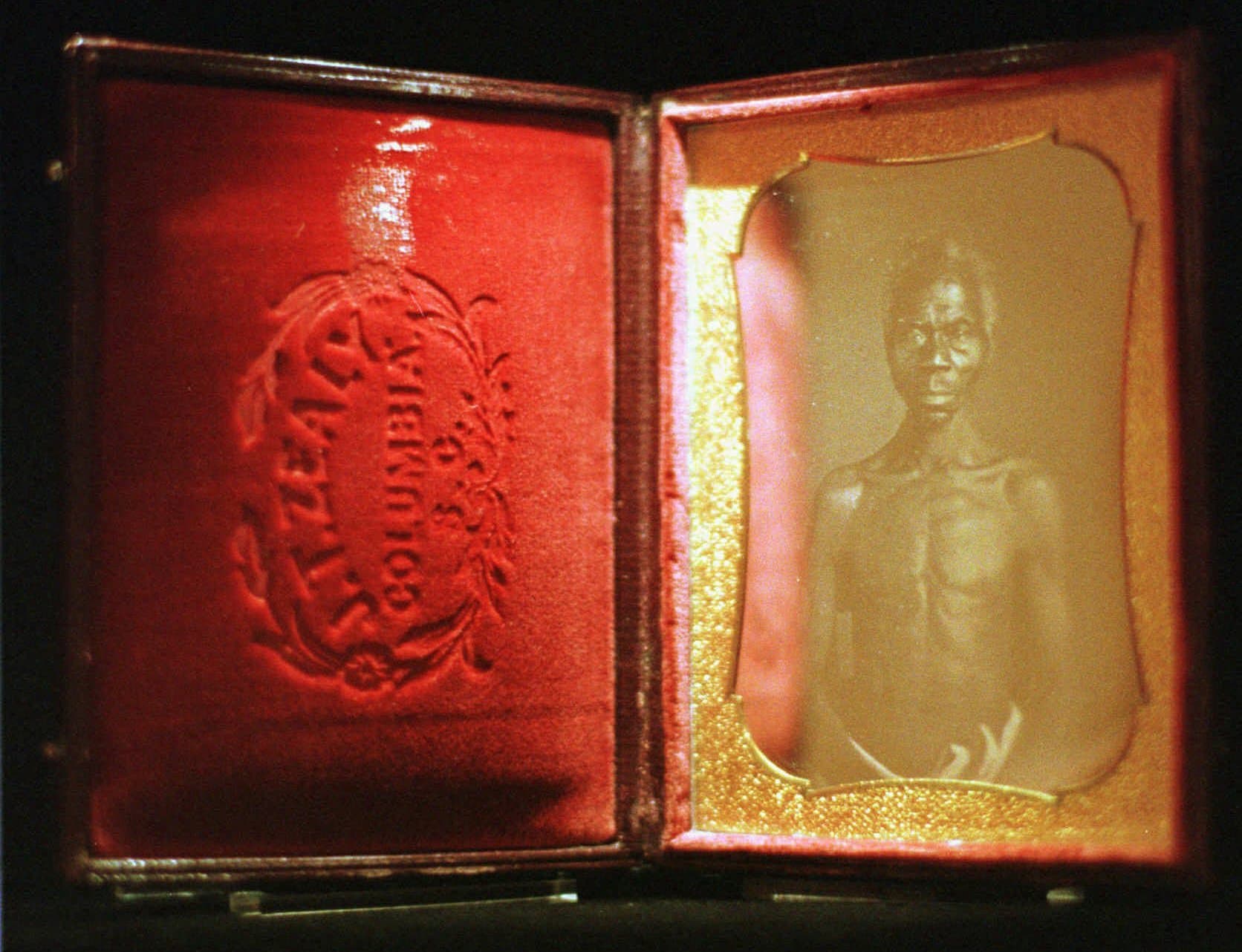Advertisement
Harvard's fight to keep photos of enslaved people goes to the Massachusetts high court

A long legal battle over four images owned by Harvard University reached Massachusetts’ highest court on Monday.
The 170-year-old daguerreotypes — one-of-a-kind, early photographs that used mercury and silver plates instead of film — show two Black people, “Papa” Renty and his daughter Delia, unclothed in a South Carolina studio, not far from where the pair were enslaved.
For over a decade, Tamara Lanier of Connecticut — who concluded after a “painstaking” effort that she is descended from Renty and Delia — has been pushing the university since 2011 to release the images to her family.
But even amid a broader institutional reckoning with slavery, Harvard has declined to do so, saying that Lanier has not proven her relationship to Renty and Delia — and that she wouldn’t have a legal claim on the images even if she had.
So far, state courts have agreed. In March, Judge Camille Sarrouf of Middlesex County Superior Court concluded that "the law, as it currently stands, does not confer a property interest to the subject of a photograph regardless of how objectionable the photograph's origins may be.”

No one disputes that the daguerreotypes at issue were produced under repugnant circumstances. They were among a series of images commissioned by naturalist Louis Agassiz in 1850, then seeking to bolster his theory that white and Black people did not share a common ancestor.
At Agassiz’s request, Renty, Delia and five other enslaved people were brought from their quarters to the Columbia, S.C., studio of Joseph Zealey, stripped and forced to pose according to his specifications. That “long and tortuous process,” Lanier’s attorneys wrote, violated even the state law in effect at the time.
At Monday’s hearing, Benjamin Crump, one of two attorneys leading Lanier’s appeal, likened the photographs to “catching a thief red-handed. And the [prior] court allowed the thief to legally keep possession of the property.”
“It would offend all concepts of equity and justice to leave the daguerreotypes in Harvard’s unclean hands,” he concluded.
Advertisement
But justices pressed Crump and Joshua Koskoff on their argument’s legal basis. Acknowledging the offenses involved in the images’ creation, Justice Scott Kafker asked how long “these types of torts” survive as legally relevant, "and 'how you convert that into a property right for your client 150-plus years later.' "
Harvard, meanwhile, maintained that there’s no legal argument for granting ownership of photographs to their subjects, “even where the photograph was taken without the subject’s consent and/or in abhorrent circumstances,” according to their brief.
But justices pressed Harvard on why it claims to have a right to the images — reported by the staff of Harvard’s Peabody Museum to be “some of the museum’s most frequently requested images” — and seeks to retain them.
Some highlighted other cases in which historical crimes have resulted in the eventual repatriation of remains or of artifacts left in indigenous reservations, internment and concentration camps.
In a statement released after the hearing, Harvard said it would place the images in another museum to provide "appropriate context," but that the litigation has blocked them from doing so.
“Harvard University is grateful to Ms. Lanier for sparking important conversations about the Zealy daguerreotypes and the horrific circumstances under which they were created,” the statement read.
A group of Agassiz’s direct descendants remain by Lanier's side; some filed a brief in support of her claims in early October.
After Monday’s hearing, Agassiz descendant Marian Moore described Harvard’s claim on the images as “since we have it, we should keep it.” “It was ridiculous,” she said.
Moore said that, as a child, all she knew of her great-great-great-grandfather Agassiz was "that he discovered glaciers move.” Now, she and her relatives have come to see him as a leading voice in the scientific racism of the 19th century.
“He wasn’t just Archie Bunker barking from his easy chair," Moore said. "He was using his prominence, his pedigree, to try to prove the inferiority” of nonwhite people.
She says she and other signatories hope to offer moral support to Lanier to begin repairing that harm, and to help her get “her day in court.” But that will depend on whether arguments that have failed before persuade the state’s top justices this fall.
This segment aired on November 2, 2021.
